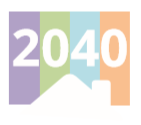Scottish Housing Day gets people talking about housing, says Aileen Campbell, Cabinet Secretary for Communities and Local Government. We need that discussion to continue in the coming months.

IN JUST four years, Scottish Housing Day has grown to become a key fixture in the housing calendar. It’s an important opportunity to celebrate the positive impact of good quality housing and encourage people to explore and understand the housing options available to them.
But what I love most about Scottish Housing Day is simpler: it gets people thinking about housing. Because we do need to think about it – and its future.
The Scottish Government’s ambition is that everyone in Scotland should live in high quality, energy efficient homes that are affordable and that meet their needs.
That’s why we’ve recently been working on developing a new vision for how our homes and communities should look and feel by 2040, and the options and choices to get there.
The time is right to reimagine our housing system.
We need to respond creatively to a number of challenges, such as providing adaptable homes and accessible services to a growing ageing population, which mean business as usual is not an option. To do that, I want to build on the wisdom across the wide and varied housing sector and engage the whole of Scotland: rural, urban and island Scotland, and those communities who face particular housing challenges.

With stakeholders’ input, we published our draft vision and principles in July and I hope you’ve had a chance to consider them and talk about them.
One of the proposed principles underpinning our draft vision reflects the Scottish Government’s commitment to protect, respect and realise internationally recognised human rights; namely that everyone has a right to an adequate home. So I’m delighted that this chimes with the theme of this year’s Scottish Housing Day which is housing as a human right.
But what do we actually mean when we speak about the right to an “adequate home”? The guidance produced by the United Nations Committee on Economic, Social and Cultural Rights is a good place to start. It describes the essential features of an adequate home as: legal security of tenure; availability of services, materials, facilities and infrastructure; affordability; habitability; accessibility; location; and cultural adequacy, including for Gypsy/Travellers, for example.
Human rights are interrelated and interdependent. If we can protect, respect and fulfil human rights in one area of a person’s life – for example housing – it can positively affect other areas of life, such as education and health.
That’s why we are taking a whole-systems, holistic approach to Housing to 2040, recognising that housing has a vital role to play in meeting many of our aspirations for Scotland, including eradicating child poverty and homelessness, ending fuel poverty, tackling the climate change emergency and promoting inclusive growth.
A warm home that feels safe, stable and permanent, enhances people’s sense of wellbeing, enables them to go to work, provides a safe space for children to play or do their homework in, and allows our elderly people to live independently. Good housing helps tackle the attainment gap, reduce inequalities, promote better physical and mental health, create communities and can help regenerate the places we live in.
So we must ensure we have a housing system that works for us all, is dynamic and nimble enough to adapt to future changes and challenges and also anticipates those challenges and is resilient in the face of them.
We’ll be consulting more widely on our draft vision and principles and how to make them a reality later this year. We’re then planning to publish our Housing to 2040 vision and route map in spring next year.
So let’s get thinking about the future of housing – and let’s keep thinking about it in the coming months. I’d love to hear directly from people about what’s important for them, their children and grandchildren. I also want to hear from housing stakeholders and professionals involved in all aspects of housing delivery and services.
Because if the vision and route map are to be authentic and truly stand the test of time, they need to be created by, and belong to, all of us.